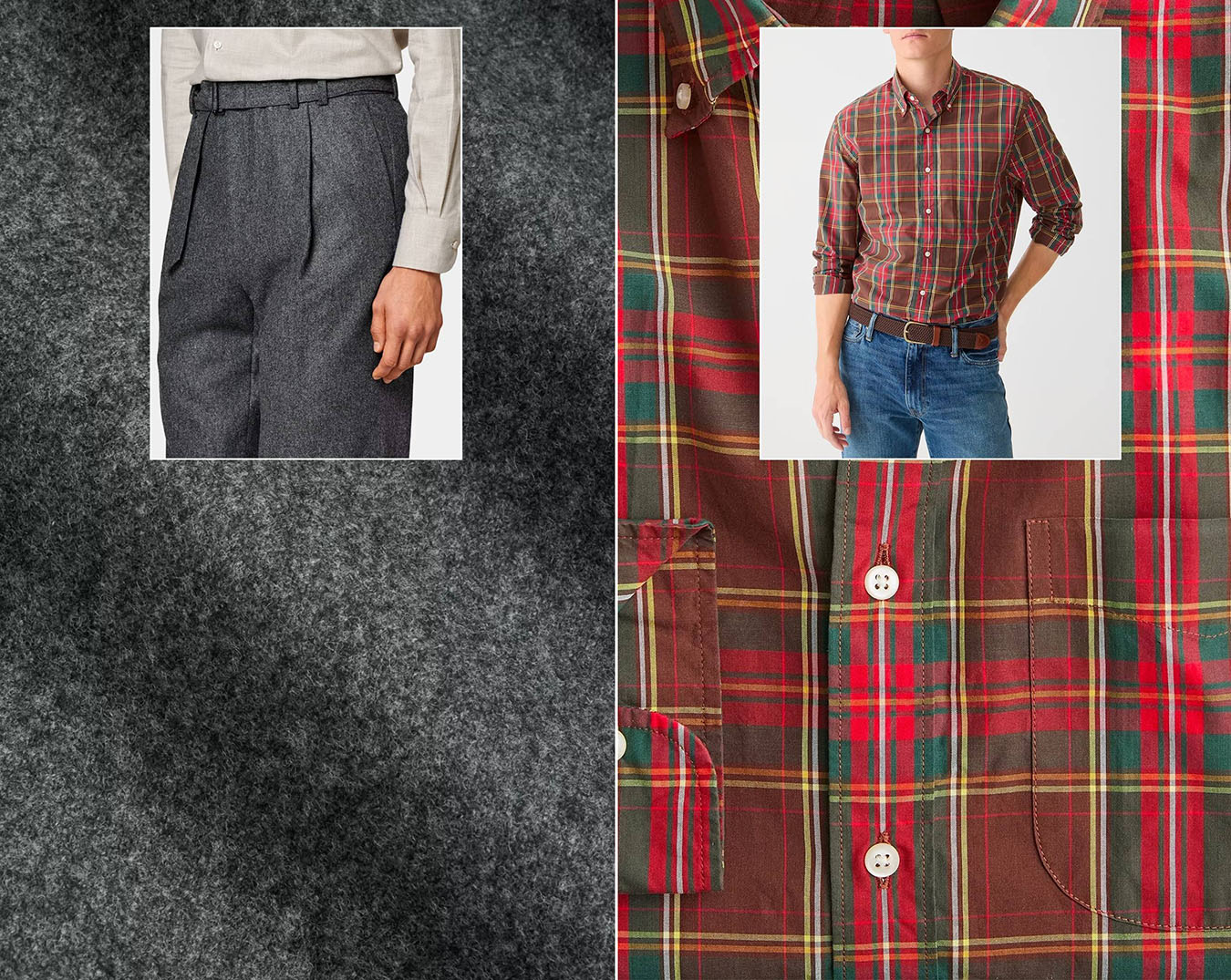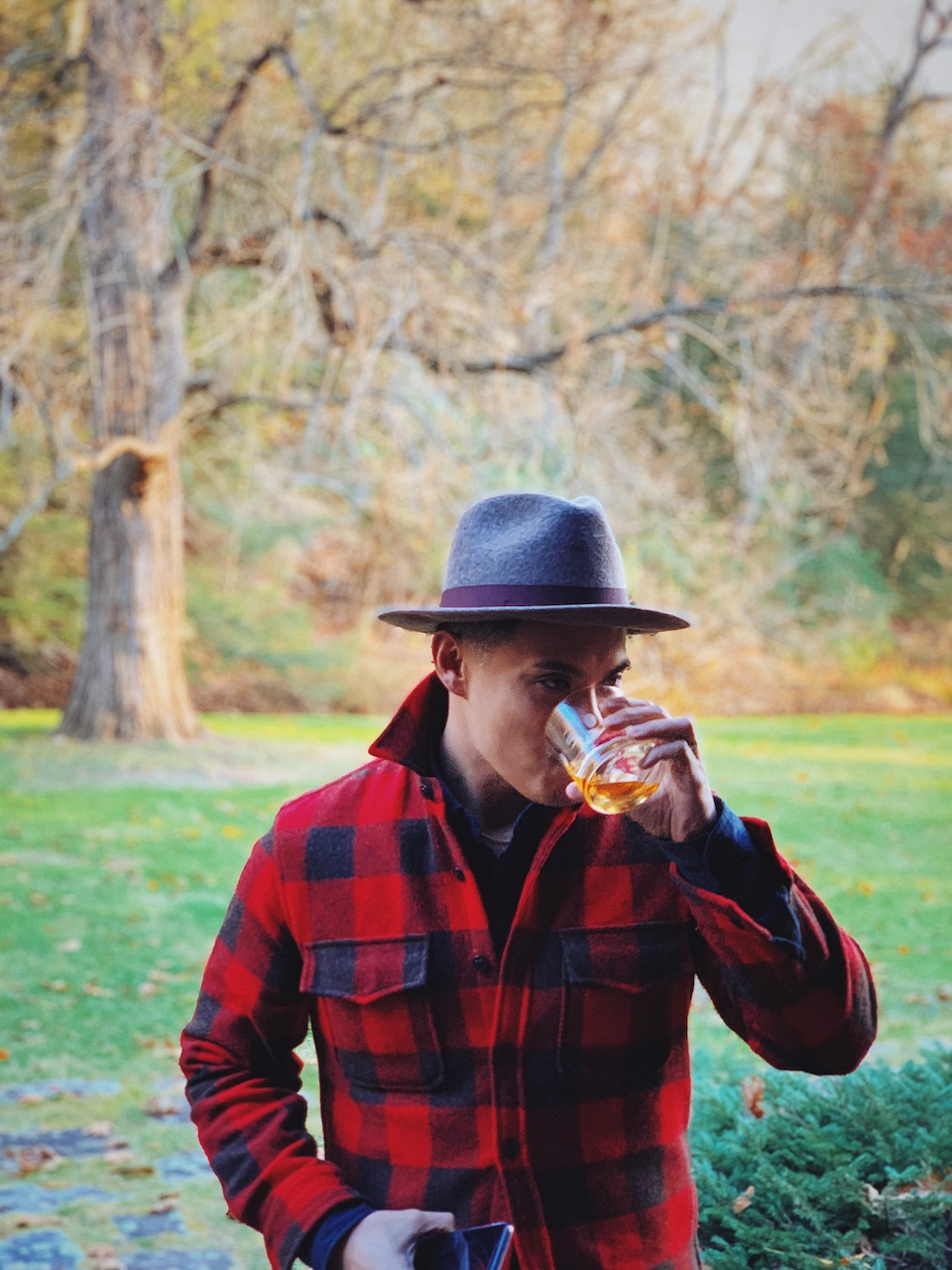If you’re just now realizing there’s a difference between flannel vs plaid, don’t feel bad. You might’ve been using those two terms interchangeably up until now, thinking they’re the same thing. And that’s quite understandable, despite the major distinction between the two.
See, in design, they go well together. Plaid flannels are way more popular than any other type of flannel. But they’re actually not the same thing.
Here’s a (way too in-depth) guide to distinguishing between plaid vs flannel, plus answers to a bunch of related questions you may have. I also break it down in tl;dr mode, if you’re too busy and just need answers 👇
The Bottom Line on Flannel Vs. Plaid
- “Flannel” is the widely accepted, generally used term for any flannel
shirt with a plaid pattern on it. - Flannel is a fabric. Plaid is a pattern.
- Plaid
shirts can be made from flannel, as well as from many other fabrics. - Flannel
shirts are also made in solid colors, not just plaid patterns. - Not all plaid
shirts are flannel. Not all flannelshirts have a plaid pattern.
What’s the Difference between Flannel Vs Plaid?
Flannel is a type of fabric and plaid is a type of pattern. They’re often partnered together, which is why the terms get used interchangeably.
All About Flannel
Specifically, flannel is a loose-weave fabric, often made of cotton or wool that’s been brushed, creating extra fine fibers. It’s exceptionally warm and soft, making it a popular material for the cool seasons.
Before becoming an outdoor staple, flannel went all the way back to 17th-century Wales, when it was made mainly out of carded sheep’s wool (otherwise known as brushed wool) or worsted yarn (a thick, high-quality yarn). These days, it can also be made out of synthetic fibers.

All About Plaid
Plaid is a pattern that originates in Scotland. Tartans associated with Scottish clans, the kind you see on traditional kilts, are a perfect example, as is the Burberry check.
Today, tartan clothing is often made using flannel fabric. Scotland isn’t a particularly warm place, so it’s no surprise clans borrowed flannel from their Welsh neighbors. Today, plaid flannels are used for clothes, as well as sheets, outerwear and outerwear lining, bed sheets, and all sorts of interior decor including pillows and curtains.
The most ubiquitous use though is probably the flannel
Flannel Vs Plaid: Straight-forward Answers
Are a Flannel Shirt and Plaid Shirt the Same?
A flannel
If you’re looking at a flannel
B in a plaid flannel
Still, a classic plaid flannel
Unlike a non-flannel plaid
Is a Plaid Shirt Flannel?
No, not necessarily. A plaid
But as we now know, a flannel
Look at the Bonobos Everyday Shirt, for example. It features a plaid pattern, but it’s made out of a lighter cotton. Unlike a flannel
It doesn’t really matter what the color scheme of a flannel
Is a Flannel Always Plaid?
Flannel
You can find non-plaid flannel used in winter curtains, as well as bedsheets and blankets. Most formal-leaning flannel pants are solid colors, like this pair of flannel pants we style in five different ways.
Plaid vs Checkered: The Main Differences and Common Questions
While we’re on the subject of flannel vs. plaid
Let’s go through some of the common questions I’ve come across (and be sure to contact me if you have others that weren’t answered here):
What Is the Lumberjack Pattern Called?
The true lumberjack pattern is called Buffalo plaid. These days however, any flannel
B wearing a buffalo plaid
It’s also sometimes called Buffalo check, though outside of proper nouns, check and plaid are two different things (see related question below).
Another name for it? The Rob Roy MacGregor Tartan. Woolrich Woolen Mills popularized (possibly designed) this pattern in 1850 and may have taken inspiration from the Scottish legend namesake, or it may have been a coincidence.
Either way, it has an outdoor adventurer look to it that can be styled to be more American frontier and more Scottish folksy.
Is Buffalo Plaid Considered Flannel?
Buffalo plaid is a pattern, whereas flannel is a fabric. This pattern was popularized by (and likely designed by) Woolrich Woolen Mills in 1850 and invokes a workwear and outdoor vibe, making it perfect for flannel
Buffalo plaid specifically is a two-color plaid, similar to

At this point, I’m sure you can gather that a flannel
Since Buffalo plaid is more uniform than other plaids (compare it to the Burberry check), it’s almost like a middle ground between true plaid and a checkered pattern. Still, the fact the criss-crossing bands have visual overlap, versus just stark color blocks, make it a true plaid.
Like the terms flannel and plaid, plaid is often mixed up with checkered. So, let’s now talk about the differences between plaid vs checkered.
What Is the Difference between Plaid and Checkered?
Checkered means a pattern consisting of two alternating colored squares. Think of a checkers board, the Formula One Race finish line, or even the table cloths at old Italian American restaurants or vintage diners and bars.
These color blocks are important in defining the checkered arrangement, which is why Buffalo plaid doesn’t count despite its two-color palette.

Gingham is a common pattern on shirting that looks similar to a check pattern and can often be referred to as “gingham check”. But technically it’s more of a simple two-color plaid pattern, similar to Buffalo plaid. But calling it a
Plaid has more dimension, vertical and horizontal lines of varying thickness, with varying degrees of spacing and overlap. Some lines might overlap hard, sitting on top of the rest of the pattern, others might be more “translucent” as the black bands are on Buffalo plaid.
Even the simplest plaid, like Buffalo, is more complex and dimensional than a checkered composition.
Is Check a Type of Plaid?
Technically, check and plaid patterns are distinctly different. So no, I don’t think anyone would consider checkered a subcategory of plaid or vice versa.
Sometimes, the word check is used to describe a specific kind of plaid. The term “Burberry Check” is a good example.

However, outside of proper nouns, check usually refers to the color-blocked, two-toned checkered pattern we previously discussed.
Is Flannel and Checkered the Same?
Just as plaid and flannel aren’t the same, neither are flannel and checkered. Flannel is a fabric, and checkered is a type of pattern. They’re even further apart from each other than flannel and plaid are. Flannels don’t often feature a checkered composition.
In fact, checkered patterns aren’t very common on classic menswear in general. I’ve seen them on bowling
So in the flannel vs plaid vs checkered conversation: Flannel is a fabric, while plaid is a pattern. Checkered is also a pattern, but one that’s different and far simpler than plaid.
Our Favorite Flannel and Plaid Shirts at EG
I mentioned that non-plaid flannel
The Flint and Tinder Jackson Flannel is one of my favorites. It comes in several expressive yet neutral colorways, and its solid color allows it to fit in with basically any personal style. You can wear it on a hike or even with chinos and boots at the pub.
When it comes to plaid
However, if you can budget up a bit, I really love the Movement Shirt from Faherty Brands. All of the plaid patterns are classic, from the bold darker ones to the spring-friendly light and pastel colorways. Plus, it’s made out of a Supima cotton blend. Supima is a rare cotton known for its extra long-staple fiber, which makes it exceptionally soft, strong, and color-retaining.
(And if you’re interested in any non-flannel
My favorite traditional plaid flannel has to be L.L. Bean’s Scotch Plaid Flannel. It’s more close-to-body than most regular-fit flannels, making it flattering but still classically rugged. It’s made out of high-quality Portuguese cotton flannel, and comes in several plaids, including the Rob Roy.
The final Word On Plaid vs Flannel (Write This down)
So, flannel is a loose-weave fabric, made from brushed cotton, wool, or synthetics, that’s known for its softness and warmth. Plaid is a pattern featuring criss-crossing lines of varying spacing, broadness, and complexity.
Plaid and flannel are often mixed up because flannel
Checkered refers to a pattern of alternating colored squares. Only two colors—bold, fully saturated colors—are used, unlike the overlapping bands on Buffalo plaid or
So when it comes to
- If a
shirt is plaid, but is not made of flannel fabric, is simply a plaidshirt . - If a
shirt is plaid and made of flannel fabric, call it a “flannel” - If a
shirt is solid-colored but made of flannel fabric, I’d still call it “flannelshirt “, but if you want to be specific, you can call it a non-plaid flannelshirt (lol, just say flannel)
We hope that was helpful. Now you can confidently shop for plaid
Questions? DM B on Instagram.
